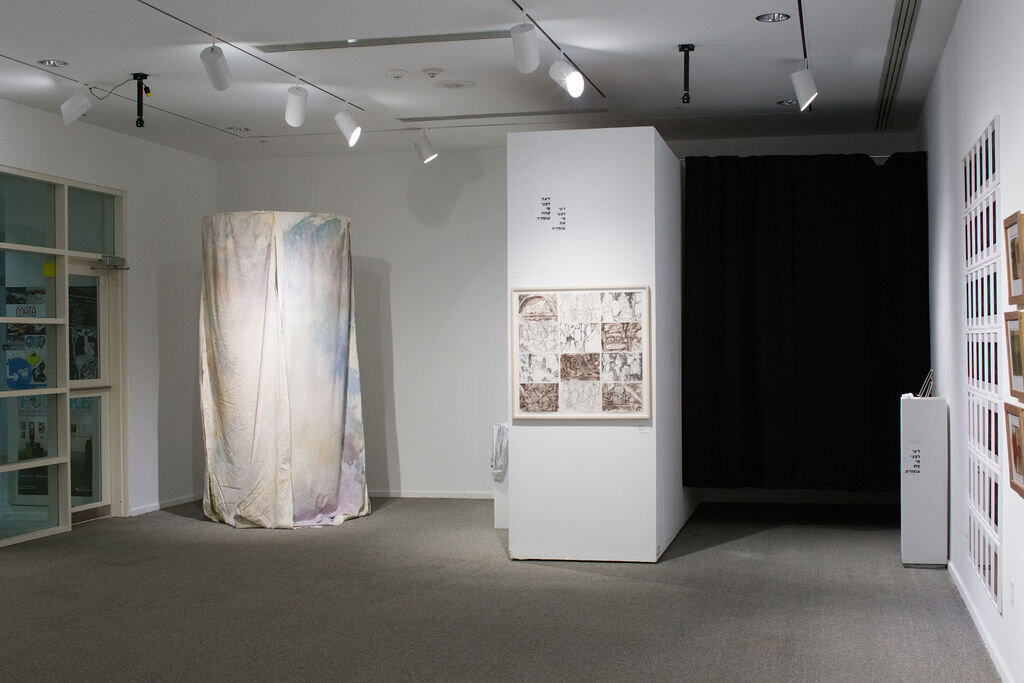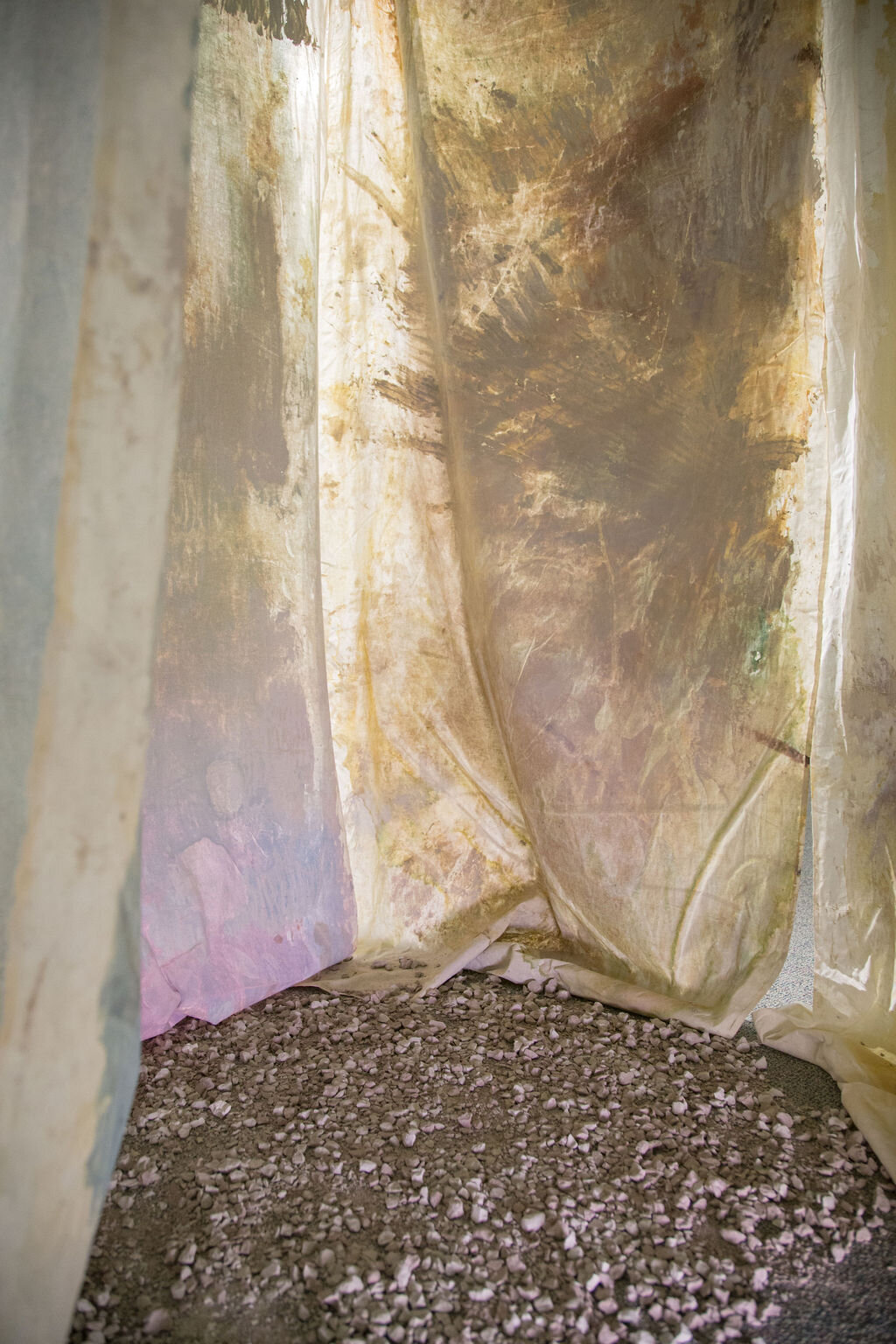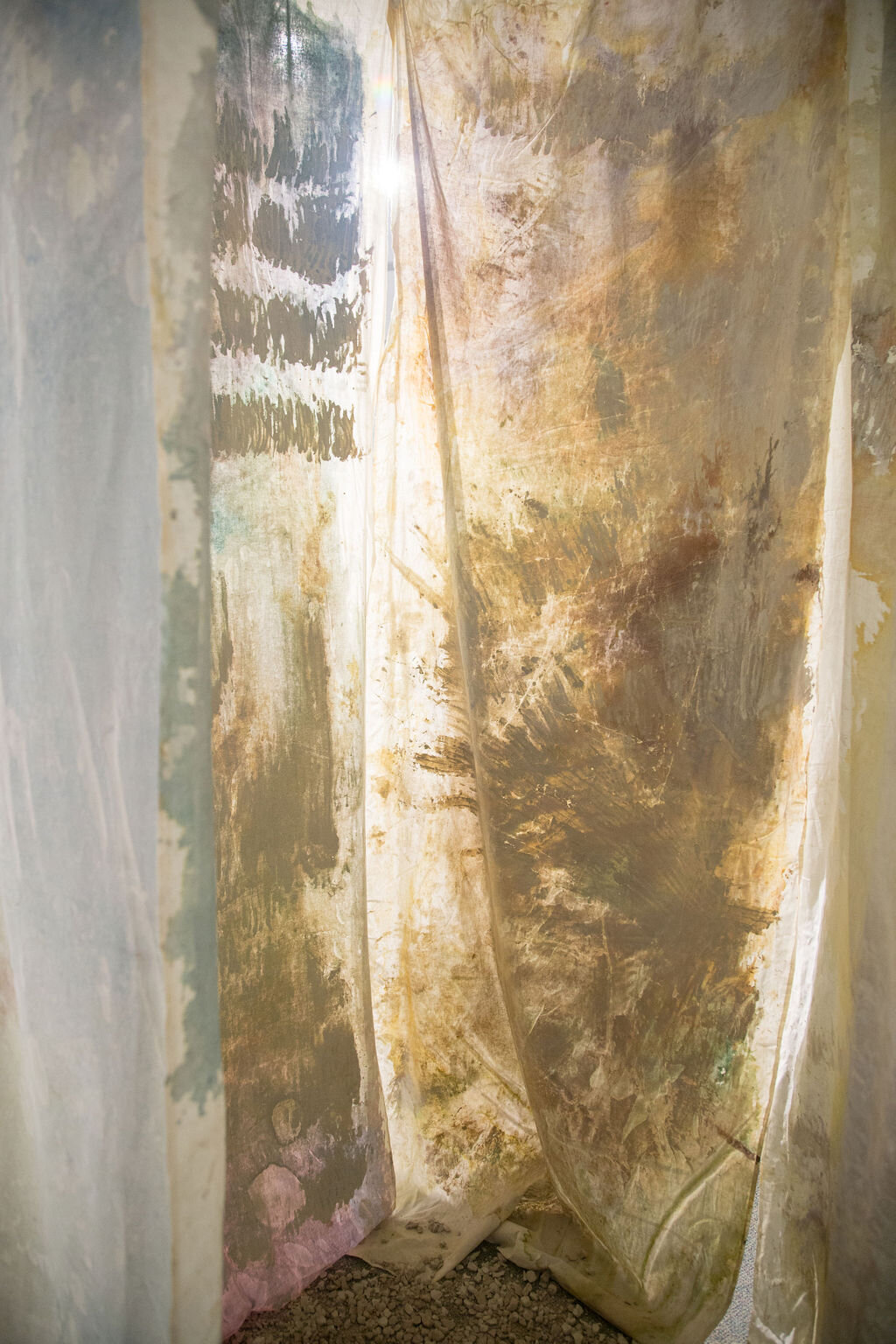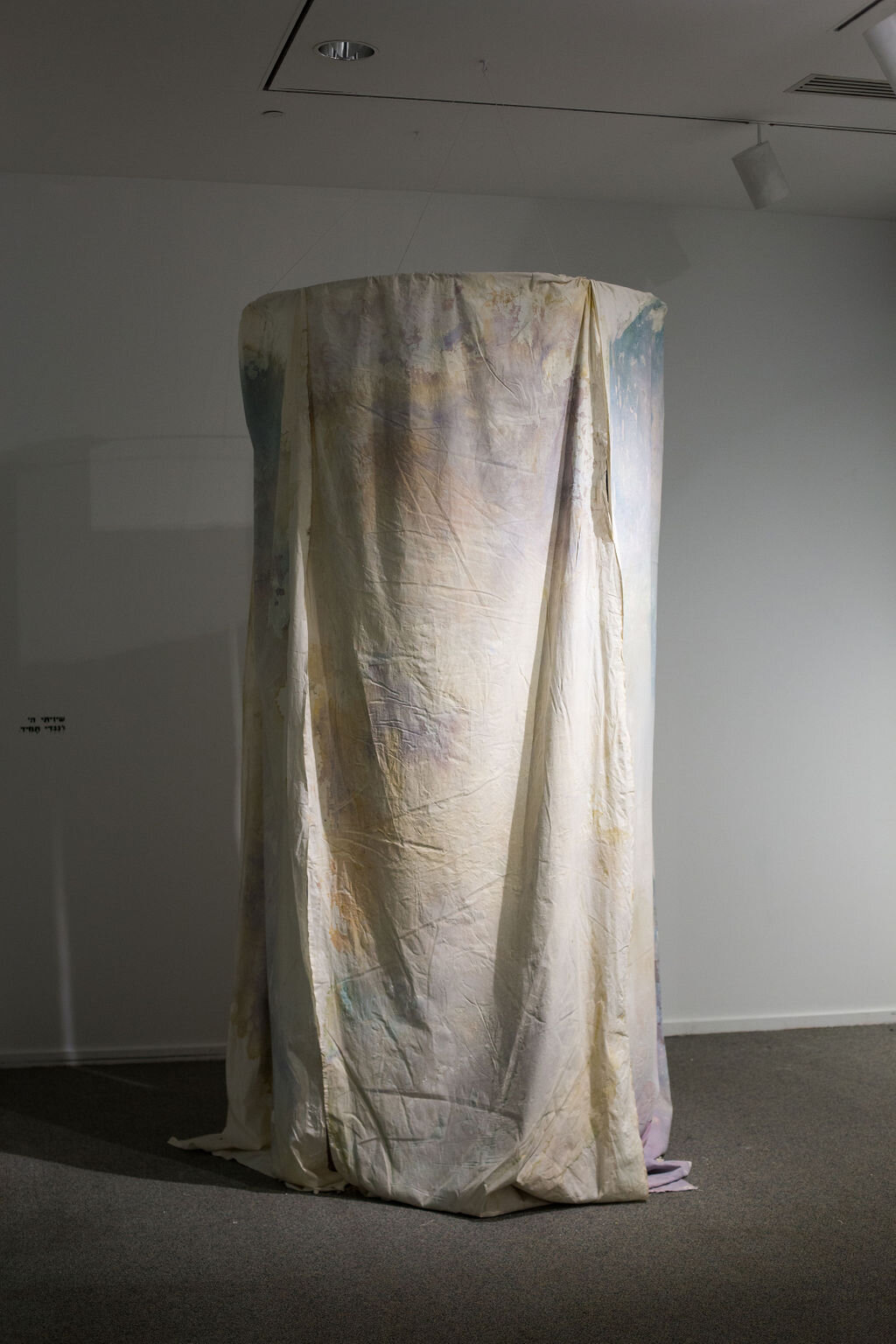GROUP SHOW, Jewish Geographies: Jewish Space in Contemporary Art, OPENED APRIL 11, 2019 AT THE The University at Buffalo Department of Art’s Lower Art Gallery, Buffalo ny | Curated by Benjamin Kersten
V’asu li Mikdash, 2019 - on left. Linen, clay, ink, steel, and thread, 12 x 3.5 feet.
Jewish Geographies examines how contemporary artists envision, create, and critique Jewish space. Space is central to understanding Jewish life and cultural expression. The Temple, the diaspora, and the shtetl are some of the many examples of spaces that orient Jewish thought. Jews often produce these spaces, or ideas of these spaces, according to the political conditions in which they find themselves. The shtetl, for example, took on a new prominence in Jewish literature and rhetoric as a quasi-mythic point of origin after the dramatic increase in Jewish emigration from Russia in 1882 following state-sponsored pogroms. Attempts to literalize Jewish space, culminating in the formation of the State of Israel and the ongoing debate about the occupation of Palestinian territory, has dramatically reshaped Jewish life. Ideas of space are also harnessed for their political potential. For example, a resurgence of calls for “diasporism” or doikayt (Yiddish for “hereness”) encourages Jews to embrace their particularity while working in solidarity with those around them. These examples indicate the significance of thinking through Jewish relationships to space and suggest that the critiquing and crafting of space is essential for the remaking of Jewishness itself. The artists in this exhibition address different aspects of Jewish space through a diverse range of media including painting, poetry, performance, and video. Some explore physical spaces like synagogues and cemeteries. Others explore the space of Jewish memory or ruminate on the concept of “home.” Several artists interrogate the politics of Jewish space, offering a feminist critique of ritual submersion in the mikveh during conversion or satirizing the masculinist ideology of Jewish nationalism. Taken together, the works in this exhibition expand concepts of Jewish space beyond a State of Israel and a state of exile. Text by Benjamin Kersten.



